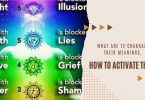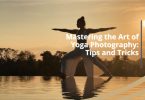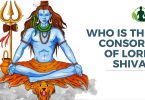If I am right, you must have landed on this blog to find the answer to the following question:
“Are yoga and stretching the same?”
For some beginners, yoga may look like a sort of stretching exercise, especially with the postures such as downward dog, reclining pigeon, and legs up to the wall.
Sure, many yoga postures are muscular stretches. They stretch every single muscle in your body.
But contrary to popular belief, yoga is not just stretching.
Any cardiologist can be a general physician, but a general physician can not be a cardiologist. Similarly, yoga can include stretching in its numerous poses, but stretching cannot be called yoga. In other words, stretching is just one part of yoga.
Yoga is the conjunction of physical, mental, and spiritual practices based on breath control, focus, and postures. Stretching is a basic body movement we do to ease the muscles.
Here we understand the factors establishing that yoga and stretching are not the same things.
The Very Basic Difference Between Yoga and Stretching
Yoga aims to create wholeness, ensuring a union of the body, breath, and mind. However, it looks like it is just stretching. This is because the other two elements, such as breathing and focus, are only experienced by the person involved in yoga, not by a beholder.
For example, yoga poses like seated hip openers, downward-facing dogs, and the mountain pose look like passive stretching, but they also require a practioner to stay focused and calm.
The physical movement in yoga improves your flexibility, balance, and strength, while the focus and meditation promote mindfulness, calmness, positivity, and peace.
Stretching is the most fundamental workout and helps with stiffness as well as facilitates blood flow in muscles.
Here I would like to quote Timothy B. McCall, the MD, at the Yoga Journal—
“Yes, yoga is the art of stretching—but as you go deeper into practicing yoga, your perception or awareness of your body increases and changes—you become more aware of the space your body occupies and develop a greater sense of the body’s position. This is called proprioception. The idea is to remain undistracted and focus on your body and your breathing.”
Understanding the Impact of Yoga and Stretching on Your Body
Starting from stretching, it works on certain muscle groups so that your body can be prepared for physical activities like running or weightlifting. For example, if you performed a chest workout, you might need a good body stretch class afterward. Or if you are about to do a sprint, you would like to open up your hips and quads with a lower-body stretch.
Yoga increases mobility and flexibility in your body. Unlike stretching, it is not an instant activity to be done just before or after any intense physical activity.
By investing a few months, you will find that your body has improved flexibility to take on any activity. A good yoga practice will help stretch muscles, tone your body, mobilize the joints, and improve your concentration.
Yoga Requires You To be Focused, Stretching Doesn’t
The objective of every yoga posture is to create a connection between mind and body. And this is why you are told to focus on your breathing so that your mind can stay calm and free from distraction. When the mind is away from thoughts and distractions, you get a peaceful state of mind. However, you don’t need to focus “that way” when it comes to stretching.
Breathing Also Distinguishes Yoga from Stretching
Another factor that sets yoga apart from stretching is breathing.
Breathing is an important element stressed in yoga postures. You need to take a deep, full breath to experience the true essence of yoga. A yoga instructor will always guide you on when to exhale or when to inhale. Sometimes, you are instructed to hold your breath during postures (think Kumbhak while performing Anulom Vilom).
But this might not be the case with stretching exercises. You just breathe normally while stretching your body.
The Role of Mental Engagement in Yoga
While the “physical part” of yoga increases strength and flexibility, the meditation and breathing involved in yoga help you focus and calm your mind, thereby mitigating stress and increasing awareness.
Many yoga postures call for certain anatomical alignments that ensure efficient proprioception and improved consciousness of your body. However, the benefits of stretching are only confined to easing your stiffness.
Do Skills Matter?
Both stretching and yoga are beneficial for us. However, the practice of yoga varies based on your ability and experience.
For instance, it may take you years to perform several poses, while others may be challenging until your body achieves a certain level of flexibility, openness, and strength. You can find both experienced and beginners in yoga classes. But stretching doesn’t require such conditions.
Generally, people of all fitness levels can do basic stretching. But yoga needs to be tailored to your health conditions, strength, or age.
Yoga Sessions Last for a Couple of Hours While Stretching Doesn’t
Generally, a yoga class can last anywhere from 60 minutes to 90 minutes, meaning that it is your complete workout.
Stretching workouts are generally performed before the workout or after a warm-up. You can do it for 5-10 minutes to train the muscles. Unlike yoga, stretching can not be considered a complete workout.
Key Takeaway:
Yoga might look like stretching, but it is an entirely different discipline from the latter. Stretching, as I have explained, is just a basic movement you can do anytime, anywhere.
While yoga has some static stretches, this is just a basic part of the practice.
Although both practices ease stiffness in your muscles, improve posture, and reduce injury risk, stretching is performed before or after a workout, while yoga is a complete workout.
Yoga heals your mind and soul, apart from just benefiting your body. Stretching is a quick yet effective workout for muscles, the spine, and joints.
Yoga is a complete workout as it promotes strength, focus, breathing, and awareness. It also requires extra time and equipment like a yoga mat.
Stretching is a simple movement to ease your stiff body.







